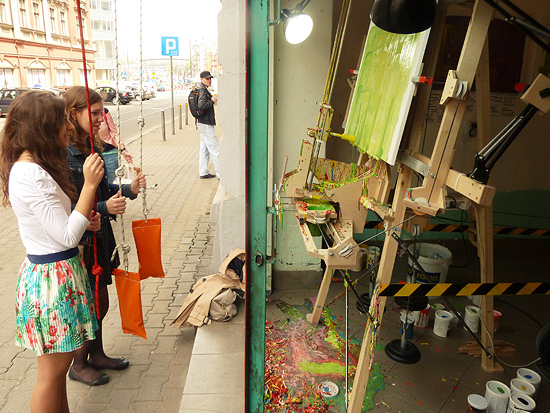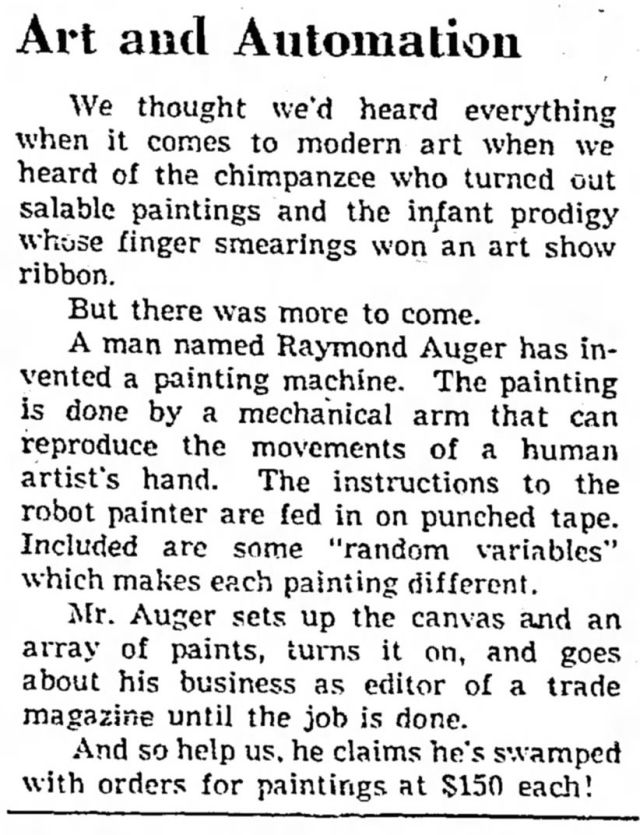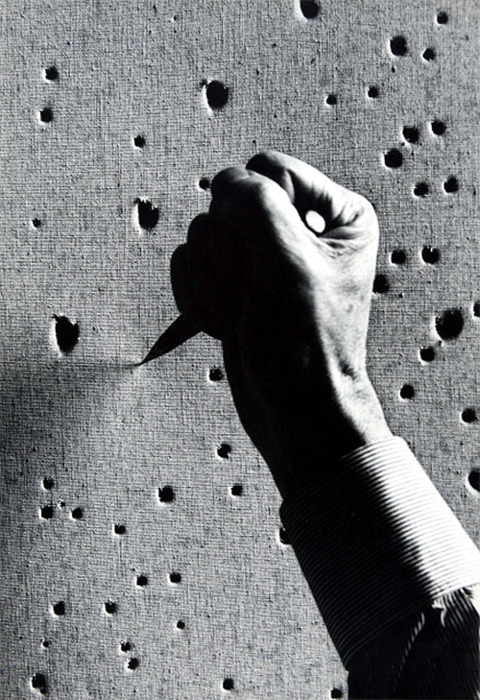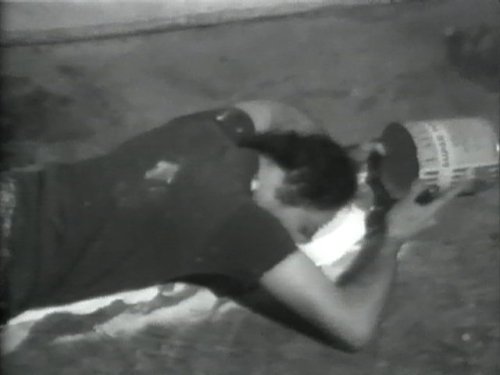I decided that the painting process itself was a selfish thing for me! But I do think the rack is important so I am displaying it with the paintings still intact. I like the way you can trace the flow of paint still. I also wanted to display some of my favorite paintings.
I have put canvases in the window as I like the casual nature of that presentation and they stand out a little more than on a white wall and I think they look more impressive. Also the light highlights the holes in the canvases well,
I have a lot more photos of the process and videos that I haven't put on here but I think you get the idea. I decided against going with a video, partly because its not really a medium I am interested in working with and partly because I like having the real object present, I suppose I could have had both if I had redone the final presentation.
I restrung the machine as at first it was just an experiment but I decided I liked it and so classed it up a bit with some less noticeable wool. I didn't want the string to overtake the paintings.
PAINTING
Thursday, 28 May 2015
Wednesday, 27 May 2015
Friday, 15 May 2015
Painting Machines

Nicklas Roy
Benjamin Grosser
https://vimeo.com/23998286
Calculating art: Meet e-David, the painting machine (w/ Video)
http://phys.org/news/2013-07-art-e-david-machine-video.html

Wim Delvoye
Belgian neo-conceptual artist known for his inventive and often shocking projects. Much of his work is focused on the body. He repeatedly links the attractive with the repulsive, creating work that holds within it inherent contradictions- one does not know whether to stare, be seduced, or to look away.
DAMIEN HIRST

spin paintings
Also haha: 'Engineering Meets art'?

LUCIO FONTANA





Fontana first began puncturing the surface of paper or canvas in the late 1940s, blurring the distinction between two and three dimensionality. Recognising the importance of this innovation, he continued, through the 1950s and 1960s, to seek different ways of developing the hole as his signature gesture. The first Tagli were made in the late summer and early autumn of 1958. They comprised small, often diagonal incisions, composed in groups over unprimed canvases. During 1959 these tentative slits evolved into single, more decisive slashes, as in the present work. Each cut was made with a single gesture using a sharp blade, and the canvases were then backed with strong black gauze giving the appearance of a void behind. In 1968 Fontana told an interviewer that, 'my discovery was the hole and that's it. I am happy to go to the grave after such a discovery' (quoted in Whitfield, p.12).
Fontana experimented with both the size and shape of the Tagli and painted a number of the canvases in bright monochrome colours. From the earliest works in the series, he wrote the word 'Attesa', meaning 'expectation' or 'hope', on the back of all the canvases with one cut, and 'Attese' (plural) on all those with multiple cuts. This added a temporal dimension to the generic title 'Spatial Concept', which he gave to all his works from the late 1940s. In 1966 Fontana presented an entire room of white Tagli at the Venice Biennale, claiming that he had found a way of 'giving the spectator an impression of spatial calm, of cosmic rigour, of serenity in infinity' (Crispolti, p.38).
In the instances where Fontana slashed an unpainted canvas, as in the present work, there is a particular affinity between the rawness of the surface and the primordial character of the gesture itself. Destruction and creation were bound together in these works. The same gesture that negated the canvas as a purely pictorial vehicle also opened up its sculptural possibilities. 'Art dies but is saved by gesture', Fontana wrote in 1948 (Lucio Fontana 1899-1968: A Retrospective, exhibition catalogue, Solomon R. Guggenheim Museum, New York 1977, p.19). Such rhetoric was characteristic of Spazialismo, the movement he founded in 1947 when he returned to Milan after spending the war years in Buenos Aires.
Painting Research
Artists:
Laura Moriarty
Martin Kline - cosmos 2000
Trine Meyer - blood smearing painting
Jodi Idella - butterfly kisses
Mayne Kratz
Sean Henry
Leah Rosenburg
Daniel Borins & Jennifer Marmos
Kris Scheifels
Holten Rower
Margie Livingstone


















.jpg)







Sunday, 3 May 2015
Subscribe to:
Posts (Atom)

